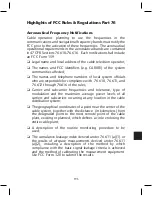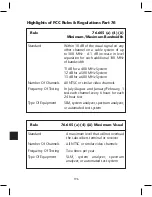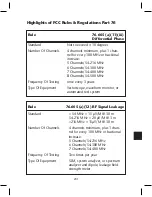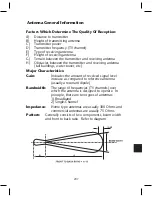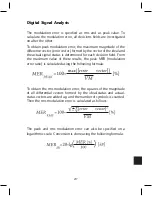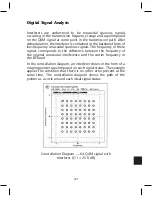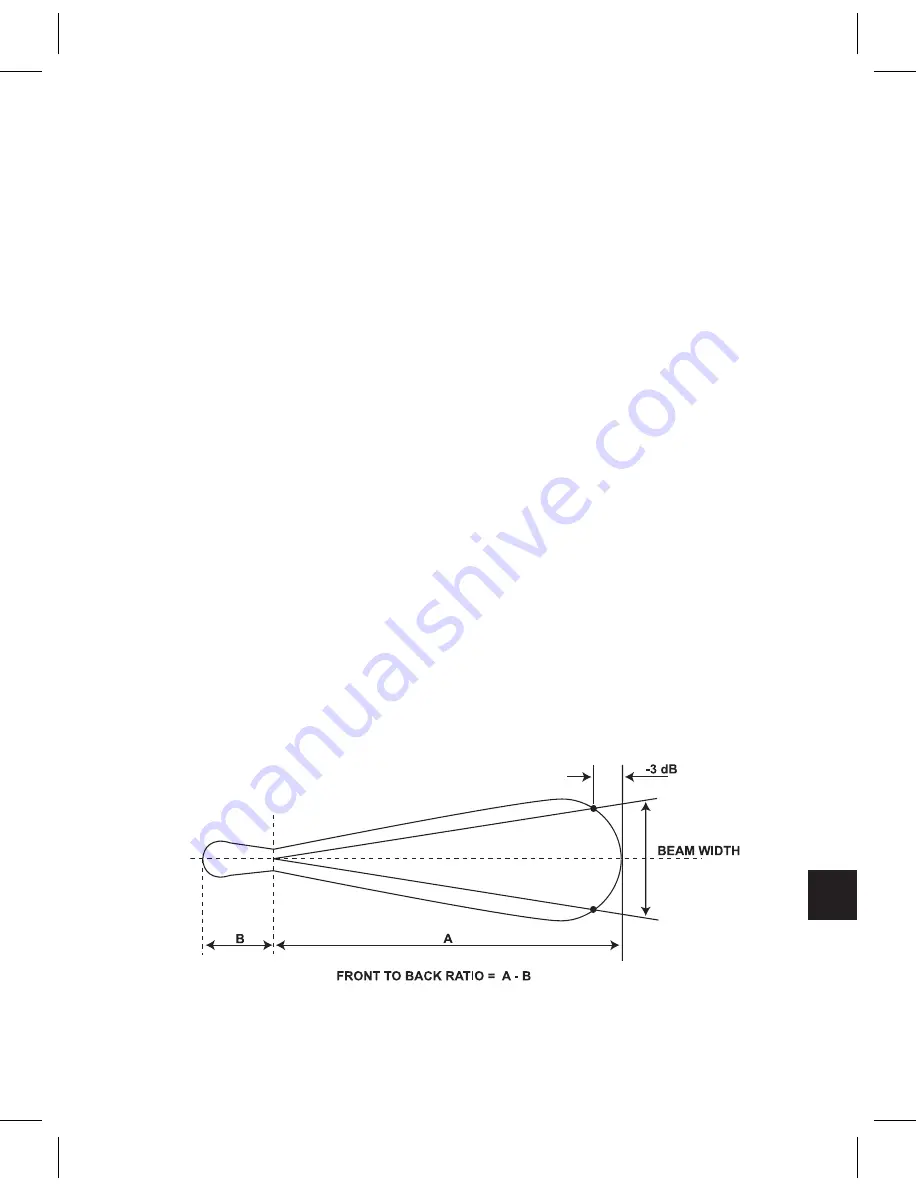
207
Antenna General Information
Factors Which Determine The Quality Of Reception:
A) Distance to transmitter
B) Height of transmitting antenna
C) Transmitter power
D) Transmitter frequency (TV channel)
E) Type of receiving antenna
F) Height of receiving antenna
G) Terrain between the transmitter and receiving antenna
H) Obstacles between the transmitter and receiving antenna
(tall buildings, water tower, etc.)
Major Characteristics:
Gain:
Indicates the amount of received signal level
increase as compared to reference antenna.
(usually a resonant dipole)
Bandwidth:
The range of frequencies (TV channels) over
which the antenna is designed to operate. In
principle, there are two types of antennas:
1) Broadband
2) Single-Channel
Impedance:
Home type antennas are usually 300 Ohms and
commercial antennas are usually 75 Ohms.
Pattern:
Generally consists of two components, beam width
and front to back ratio. Refer to diagram.
Summary of Contents for AMM-806
Page 86: ...79 TVCB PC Installation ...
Page 93: ...86 SMI Installation Torque Patterns 1 Start Here 2 3 4 5 6 1 Start Here 2 3 4 4 PORT 8 PORT ...
Page 125: ...118 Fiber Optics Fiber Loss vs Path Length Single Mode 1550 nm ...
Page 156: ...149 Cable TV Channel Format NTSC NTSC Composite Video Waveform ...
Page 157: ...150 US Frequency Spectrum ...
Page 158: ...151 FCC Aeronautical Band Frequencies Used for Communication and Navigation ...
Page 175: ...168 Common CATV Symbols ...
Page 176: ...169 Common CATV Symbols ...
Page 177: ...170 Digital L Band Distribution Symbols ...
Page 178: ...171 Digital L Band Distribution Symbols ...
Page 183: ...176 Typical Cable Attenuation Chart in dB 100 Feet 68 F 20 C ...
Page 187: ...180 Echo Rating Graph ...
Page 188: ...181 Signal to Interference Limits Non Coherent Carriers ...
Page 190: ...183 Heterodyne Modulator Analog ...
Page 191: ...184 Heterodyne Processor Analog ...
Page 213: ...206 Multiplexers ...
Page 285: ...Rev 8 0 ...

